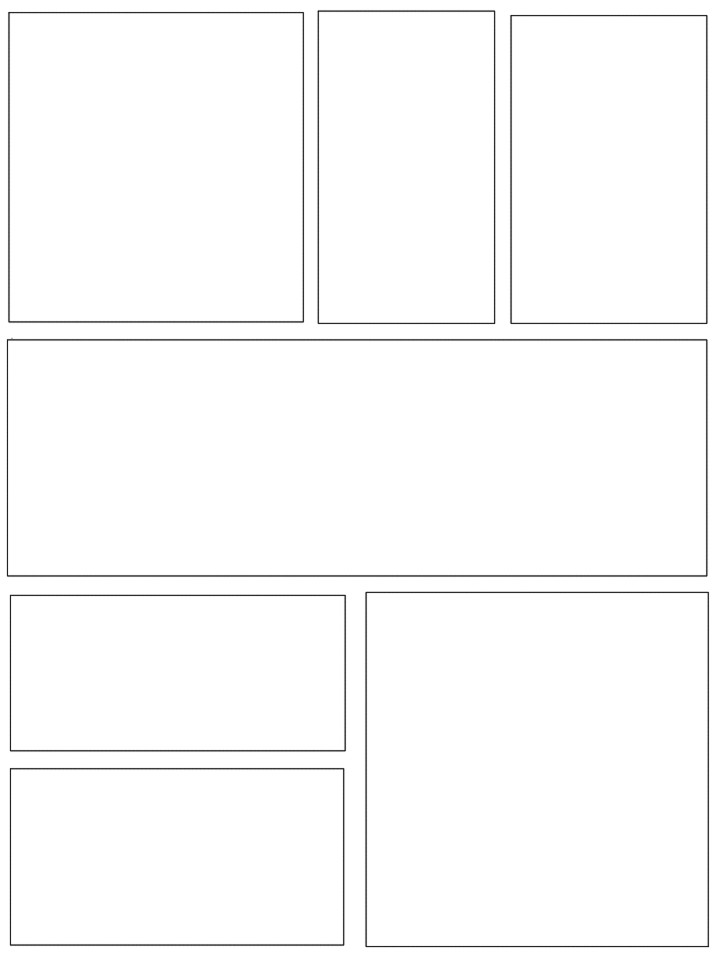Is one of the very basic technique used in manga and it is an important factor in manga. Without paneling there wouldn't be any separation between scenes and the manga would be very confusing. Well in case you don't know, panels are the boxes in manga where the drawings/scenes are drawn in. With paneling you can deliver feelings and emotions to readers depending on the shape and size of the panel. Panels also allow mangakas control what the readers see, and emphasize moods by having different shapes of panels or even non-framed panels.
 Panels aren't always small square boxes they could be in thin, tall, wide, short, etc shapes, most or maybe all manga have their panels in a four sided shape with different sizes and angles (such as squares, rectangles, trapezium etc). In paneling you should try structuring to ensure transition, good spacing and how the story flows. So don't put in random panels without structuring them, since if you don't you panels aren't always effective in delivering the mood, story line, transition, etc. When you draw panels without a structure your manga story won't be that very understandable and readers would get confused how the story is like. So it is strongly advised to structure your manga panels first and I suggest structuring your manga panels while making your manga's storyboard.
Panels aren't always small square boxes they could be in thin, tall, wide, short, etc shapes, most or maybe all manga have their panels in a four sided shape with different sizes and angles (such as squares, rectangles, trapezium etc). In paneling you should try structuring to ensure transition, good spacing and how the story flows. So don't put in random panels without structuring them, since if you don't you panels aren't always effective in delivering the mood, story line, transition, etc. When you draw panels without a structure your manga story won't be that very understandable and readers would get confused how the story is like. So it is strongly advised to structure your manga panels first and I suggest structuring your manga panels while making your manga's storyboard.
In different type of genres panels are constructed differently according to what type of manga genre. In shoujo mangas panels pace through the story in a slow pacing speed which creates shoujo mangas have large panels. For the other hand shounen manga uses a much faster pace in panels especially in fight scenes, shounen manga usually use some irregular panels especially in tense scenes such as fight scenes. Panels are also used for telling flashbacks or even foresights, depending on how do you apply your panel into the manga. So it also depends on what type of manga and scene you want to create for your manga.
 Panels aren't always small square boxes they could be in thin, tall, wide, short, etc shapes, most or maybe all manga have their panels in a four sided shape with different sizes and angles (such as squares, rectangles, trapezium etc). In paneling you should try structuring to ensure transition, good spacing and how the story flows. So don't put in random panels without structuring them, since if you don't you panels aren't always effective in delivering the mood, story line, transition, etc. When you draw panels without a structure your manga story won't be that very understandable and readers would get confused how the story is like. So it is strongly advised to structure your manga panels first and I suggest structuring your manga panels while making your manga's storyboard.
Panels aren't always small square boxes they could be in thin, tall, wide, short, etc shapes, most or maybe all manga have their panels in a four sided shape with different sizes and angles (such as squares, rectangles, trapezium etc). In paneling you should try structuring to ensure transition, good spacing and how the story flows. So don't put in random panels without structuring them, since if you don't you panels aren't always effective in delivering the mood, story line, transition, etc. When you draw panels without a structure your manga story won't be that very understandable and readers would get confused how the story is like. So it is strongly advised to structure your manga panels first and I suggest structuring your manga panels while making your manga's storyboard.In different type of genres panels are constructed differently according to what type of manga genre. In shoujo mangas panels pace through the story in a slow pacing speed which creates shoujo mangas have large panels. For the other hand shounen manga uses a much faster pace in panels especially in fight scenes, shounen manga usually use some irregular panels especially in tense scenes such as fight scenes. Panels are also used for telling flashbacks or even foresights, depending on how do you apply your panel into the manga. So it also depends on what type of manga and scene you want to create for your manga.
No comments:
Post a Comment